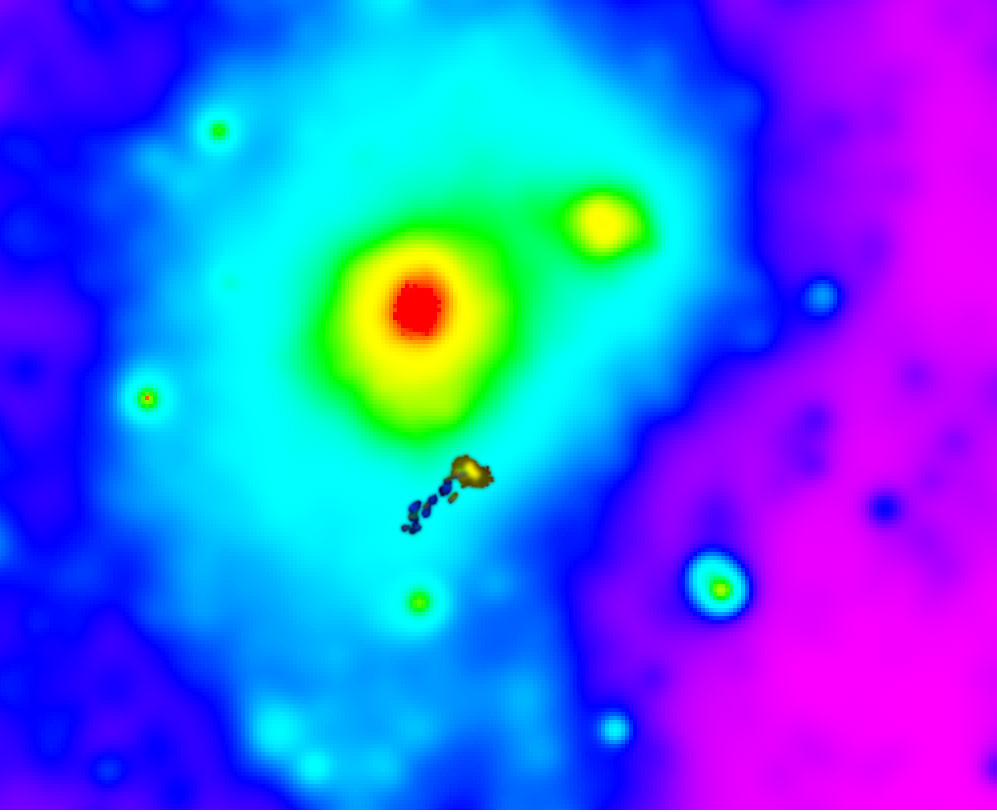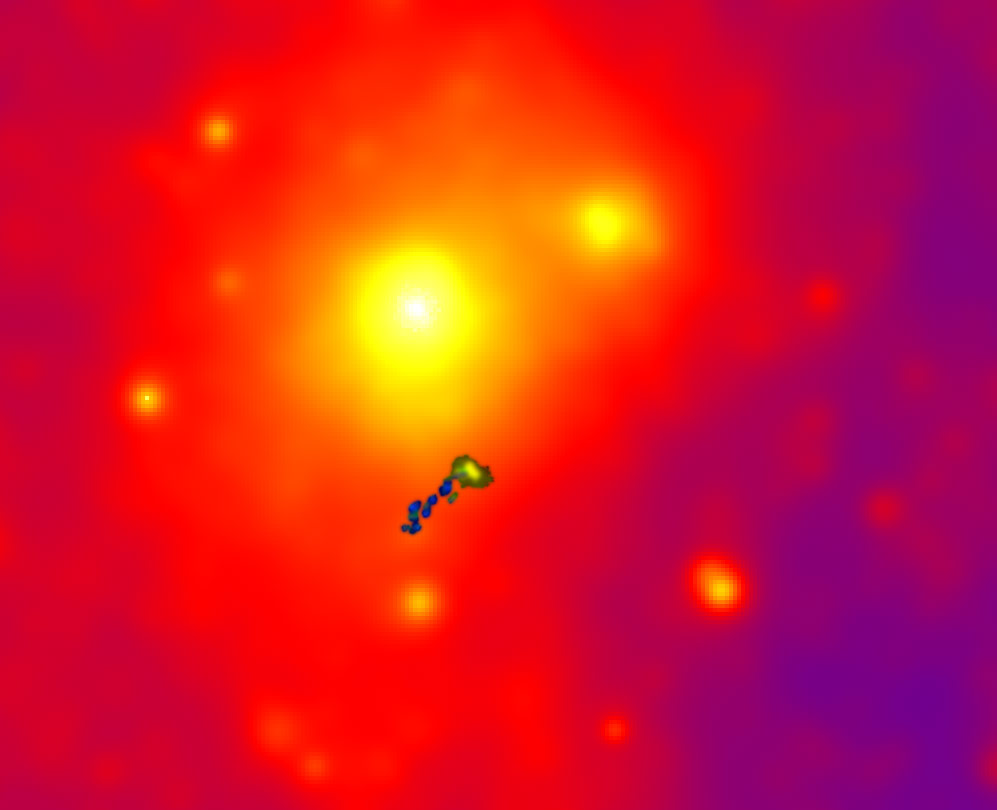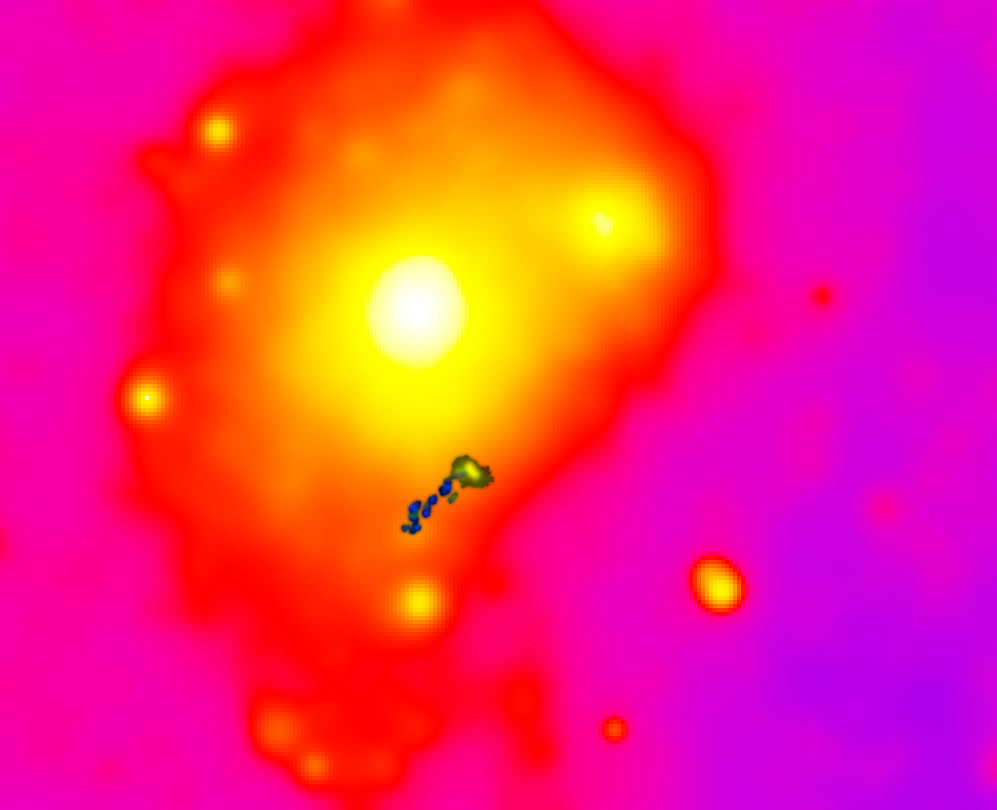Galaxy in Throes of Death Spied for 1st Time

INDIANAPOLIS — A galaxy has been observed in its cosmic death-throes for the first time.
New research shows that a bright dwarf galaxy in a cluster near the Milky Way is losing its gas, creating a tail of fireballs expelled from the innards of the galaxy. The galaxy, called IC 3418, appears to be moving from one phase of galactic evolution into another.
"We think we're witnessing a critical stage in the transformation of a gas-rich dwarf irregular galaxy into a gas-poor dwarf elliptical galaxy — the depletion of its lifeblood," the principal investigator of the study, Jeffrey Kenney of Yale University, said in a statement. "Until now, there has been no clear example of this transformation happening." [Gallery: 65 All-Time Great Galaxy Hits]
IC 3418 is located in the Virgo Cluster — a group of about 1,000 galaxies and the cluster closest to the Milky Way's Local Group of galaxies.

Scientists think that IC 3418 stopped making new stars about 200 to 300 million years ago, rendering the galaxy effectively infertile, the researchers said. "Stars, planets, and life can form only if a galaxy has gas to make them," Kenney said.
The galaxy's fireball tail, however, does show signs of new star formation. The gas within IC 3418 is forced outside of the galaxy by pressure given off by other galaxies in the cluster.
"If you hold popcorn and unpopped kernels of corn in your hand and stick it out the car window as you drive, the wind caused by the car’s motion through the air will blow away the popcorn but leave the denser unpopped kernels in your hand," Kenney said. "This is like the gas clouds in galaxies being blown out of the galaxy by the wind of cluster gas, while the denser stars remain behind."
Get the Space.com Newsletter
Breaking space news, the latest updates on rocket launches, skywatching events and more!

By observing this dwarf elliptical galaxy— a subspecies of the most common type of galaxy in the universe — it could give astronomers a better sense of how they evolve.
"It’s gratifying to find a clear example of an important process in galaxy evolution," Kenney said. "I enjoy digging through evidence to assemble a story about what happens to galaxies. I’ve come to think of myself as an intergalactic forensic pathologist — someone who studies the bodies of galaxies seeking evidence of traumatic events responsible for the present state of the galaxy."
Kennedy presented his findings today (June 3) here at the 222nd meeting of the American Astronomical Society.
Follow Miriam Kramer @mirikramer and Google+. Follow us @Spacedotcom, Facebook and Google+. Original article on SPACE.com.
Join our Space Forums to keep talking space on the latest missions, night sky and more! And if you have a news tip, correction or comment, let us know at: community@space.com.

Miriam Kramer joined Space.com as a Staff Writer in December 2012. Since then, she has floated in weightlessness on a zero-gravity flight, felt the pull of 4-Gs in a trainer aircraft and watched rockets soar into space from Florida and Virginia. She also served as Space.com's lead space entertainment reporter, and enjoys all aspects of space news, astronomy and commercial spaceflight. Miriam has also presented space stories during live interviews with Fox News and other TV and radio outlets. She originally hails from Knoxville, Tennessee where she and her family would take trips to dark spots on the outskirts of town to watch meteor showers every year. She loves to travel and one day hopes to see the northern lights in person. Miriam is currently a space reporter with Axios, writing the Axios Space newsletter. You can follow Miriam on Twitter.









